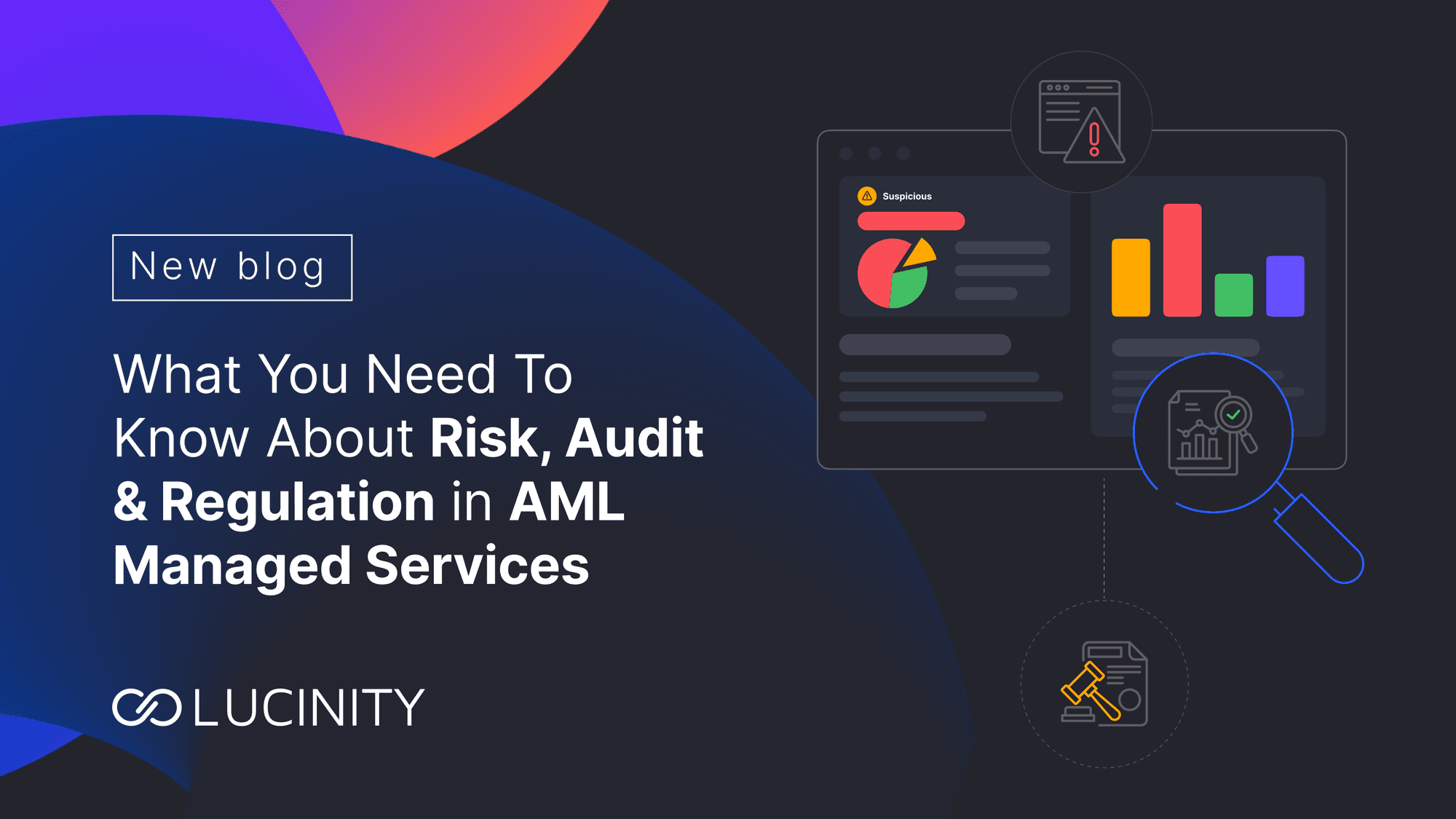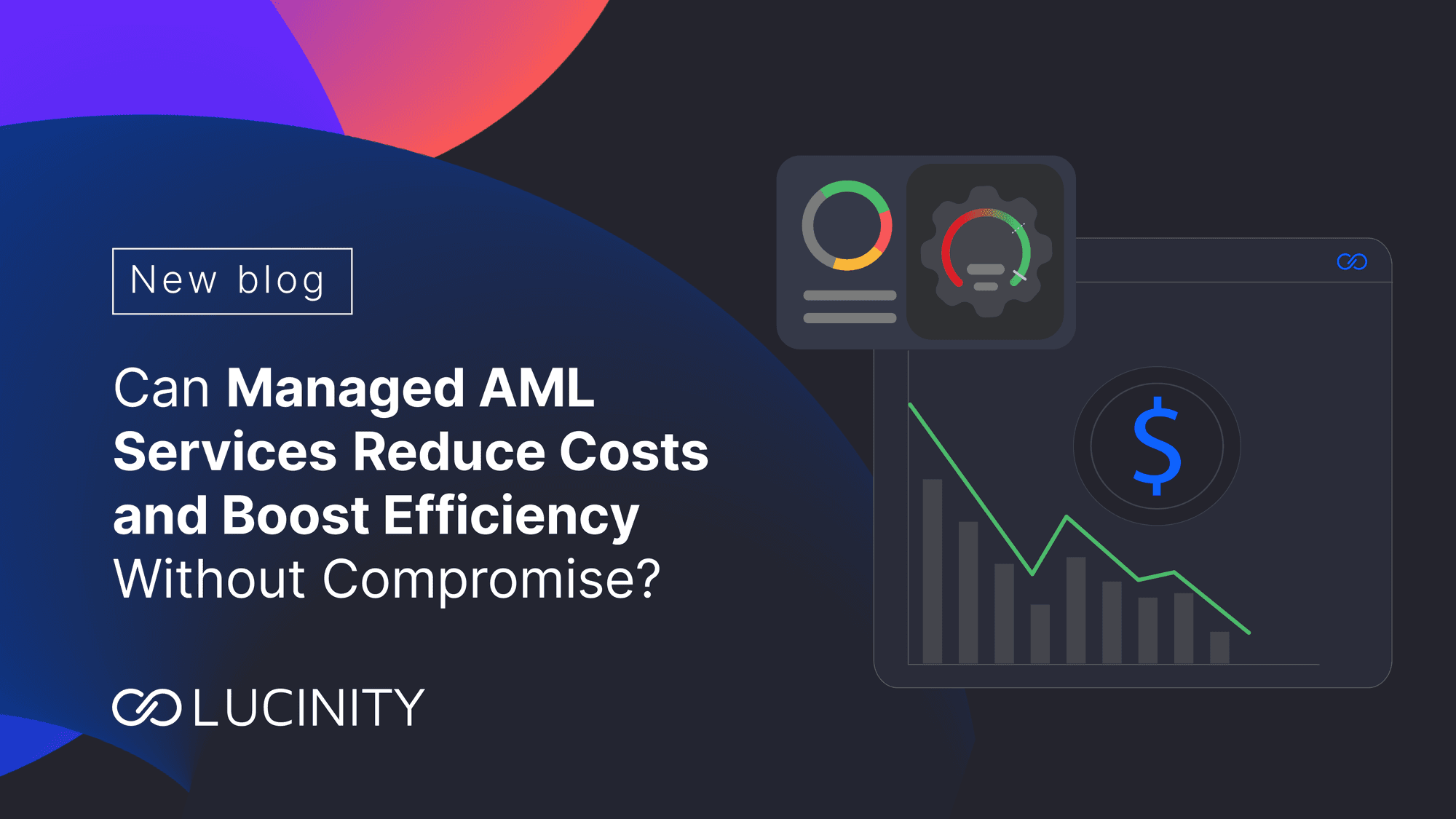How Generative AI Enhances Financial Crime Prevention Efforts
Discover how Generative AI is redefining financial crime prevention with advanced predictive modeling, anomaly detection, and adaptability to combat fraud effectively.
Generative AI’s ability to analyze vast datasets, adapt swiftly, and address complicated challenges has attracted the interest of anti-money laundering professionals. The term refers to artificial intelligence models that can generate new data and content. Unlike traditional AI which relies mainly on rules and labeled data, generative AI can learn patterns from vast amounts of information and produce novel, realistic artifacts like text, images, video, or audio.
In financial services, generative AI allows institutions to augment human expertise for detecting potential financial crimes. It acts as a co-pilot to analysts, helping them overcome challenges like data overload, false positives, and maintaining speed and accuracy.
Today, we will discuss how Generative AI powers advanced Fincrime prevention efforts by leveraging its capabilities like anomaly detection, predictive modeling, and relationship analysis. Let us begin by learning where traditional methods fell short, to understand the full impact of AI in the field.
Challenges of Traditional Methods
Traditional methods for preventing financial crimes have faced several challenges in recent years. Despite heavy investments in human analysts, financial institutions have struggled to meet their objectives and regulatory expectations. This is primarily due to the limitations of traditional AI and manual approaches, which include-
Resource Intensity
One major challenge is resource intensity. Hiring and training analysts require immense time and money, yet many institutions still fall short of their goals. Analyst fatigue leads to errors and inconsistent case reviews.
Lack of Standardization
Lack of standardization is another issue. With multiple analysts working on cases, maintaining consistent standards is difficult. This leads to varying results across the organization.
Slow and Innaccurate
Speed and accuracy suffer as well. The overwhelming volume of cases causes fatigue and human error. With limited time, analysts cannot thoroughly investigate each case.
Data Overload
Finally, massive datasets and false-positive alerts from legacy systems produce data overload. Fragmented data sources further complicate analysis. Faced with these obstacles, human analysts struggle to keep pace.
Briefly; traditional methods are resource-heavy, inconsistent, and ill-equipped to handle modern data volumes and complexity. Financial institutions need advanced solutions to augment human capabilities, Financial institutions need advanced solutions to augment human capabilities, and this is where Generative AI and machine learning become instrumental.
How Generative AI Helps in Fincrime Prevention- Examples
Generative AI is optimizing the approach of financial institutions to key processes like customer onboarding, transaction monitoring, and case investigation. Applying Generative AI in financial crime prevention helps in three fundamental ways:
Prediction
Before onboarding new customers, generative AI models can predict if that customer is likely to become problematic in the future. This allows proactive risk management rather than reacting after the fact. Generative AI analyzes data like "identity details, transaction history, and connections to screen applicants effectively".
Monitoring
Once a customer is onboarded, generative AI continuously monitors their activity for anomalies. It identifies potentially suspicious transactions or behavior changes. This real-time monitoring acts as an early warning system to detect emerging issues. As noted in one article, generative AI excels at "identifying deviations from normal customer profiles".
Resolution
When a potential financial crime is detected, generative AI accelerates investigation and resolution. By analyzing connections and patterns across data, it provides actionable intelligence to resolve cases faster. In other words, it delivers accelerated resolutions and continuous feedback loops.
Through these three approaches, Generative AI augments human expertise for more effective outcomes, benefiting both institutions and customers.
Specific Advantages of Generative Artificial Intelligence Over Legacy Tools and Manual Analysis
Generative AI offers many advantages due to its generative, fast, relatively autonomous, and accurate nature - amongst other strengths. Here are some specific benefits of adopting Generative AI-powered solutions for Fincrime Prevention:
Adaptability and Continuous Learning
Unlike purely rule-based systems, generative AI models continuously learn from new data and adapt to changing patterns. This allows them to evolve and improve detection over time as new fraud techniques emerge. Generative AI can quickly adjust algorithms to detect novel threats that traditional methods may miss.
Anomaly Detection
Generative AI excels at finding anomalies in large datasets that may indicate criminal activity. For example, it can spot unusual spikes in transactions or spending that deviate from a customer's typical behavior. These subtleties often go undetected by human analysts or rules-based systems.
Reducing False Positives
By learning from historical data, generative AI can significantly reduce false positives compared to traditional systems. Fine-tuning detection thresholds avoids wasted investigations and unnecessary scrutiny of legitimate activity.
Analyzing Complex Relationships
Financial crimes frequently involve networks of entities that can be challenging to unravel manually. However, generative AI can uncover hidden connections and money laundering schemes by analyzing relationships more effectively than human analysts.
Natural Language Processing
Generative AI leverages NLP and large language models to extract useful information from unstructured text data like emails, chat logs, and social media. This allows it to detect suspicious activity or communications that may point to fraud.
Predictive Modeling
Based on historical customer data, generative AI can anticipate potential issues before they arise. This gives financial institutions the ability to be proactive rather than just reactive.
Scalability and Speed
Generative AI can rapidly analyze massive datasets without compromising accuracy or performance. This scalability and real-time processing allow for quick responses to emerging threats.
Unsupervised Learning
Unlike traditional methods, generative AI doesn't solely rely on labeled training data. By learning from unlabeled data, it becomes more adaptable to new scenarios.
Generative AI V/S Traditional AI in Fincrime Prevention
Traditional AI can also offer some common benefits above largely manual methods and is adopted by many legacy tools. However, Generative AI offers higher efficiency and impact by adding the ability to seamlessly generate new data points and scenarios and learn in real time. It enables real-time adaptation to new fraud patterns and continued accuracy without the extensive retraining that traditional AI requires.
As a result, Generative AI is considered a more accurate, adaptable, and impactful choice compared to traditional AI applied by older systems or other manual methods. All these advantages can be realized by incorporating Generative AI solutions into Fincrime prevention processes, and Lucinity’s solutions are built to make this implementation simple and seamless.
Using Generative AI for Financial Crime Prevention with Lucinity
Lucinity is leading the integration of Generative AI into financial crime prevention. Their platform is designed to augment the capabilities of financial institutions in combating FinCrime through an array of advanced AI-powered tools. Below is an overview of the offerings by Lucinity that leverage the power of Generative AI:
Luci Copilot
Luci is Lucinity’s Generative AI copilot that simplifies the complexities of financial crime investigations by using Generative AI. By turning hours into minutes, Luci assists in navigating through massive data sets and complex case inquiries, thereby empowering users to focus on the decisions that matter the most.
Case Management
Lucinity's unified platform uses AI to streamline the alert, investigation, and reporting processes by consolidating compliance workflows. The result is a significant boost in efficiency, enabling investigators to manage cases with more precision and less manual
With Lucinity’s Customer 360, customers benefit from a comprehensive analysis of customer behavior. The platform utilizes generative AI and advanced analytics to accurately analyze transaction behavior and KYC data. This uncovers insights, provides risk intelligence, predicts trends, and drives informed actions.
Transaction Monitoring
Lucinity's robust transaction monitoring employs generative AI in conjunction with rule-based approaches to offer complete coverage, behavior-based risk screening, clear decision-making, and explainable AI. This ensures a high level of transparency and trust in the automated systems.
Regulatory Reporting
Efficient management of regulatory reporting is essential in maintaining compliance. Lucinity ensures this process is optimized by integrating generative AI, which can unlock the true potential of FinCrime investigators, aligning with regulatory expectations while reducing overhead.
Lucinity places a high priority on security, ensuring that users can trust their robust measures. This focus on security works hand in hand with their generative AI applications, ensuring a responsible and dependable deployment of advanced technology.
The Path Ahead: Balancing Generative AI and Human Expertise
Generative AI brings impactful capabilities to the table in helping prevent financial crimes. Its remarkable pattern recognition, anomaly detection, predictive modeling, and improved adaptability allow it to bolster human expertise.
However, it is not a magic wand. Thoughtful implementation is key - generative AI should complement skilled analysts, not fully replace them. The ideal approach combines AI's tireless data crunching and detection abilities with human judgment, expertise, and oversight.
Lucinity aims to help financial institutions achieve this balance through its augmented intelligence and Generative AI solutions, particularly the Luci co-pilot. To learn more about how Lucinity empowers financial crime prevention with generative AI, visit us at Lucinity.com.
FAQs
How does Generative AI contribute to financial crime prevention?
Generative AI aids by predicting risky customers, monitoring for suspicious activities, and accelerating resolution, significantly enhancing the efficiency of financial crime prevention strategies.
What makes Generative AI different from traditional AI in fighting financial crimes?
Traditional AI relies on pre-defined rules and historical data, with limited ability to adapt until it is retrained with new data through manual intervention. Generative AI continuously learns from diverse data inputs, generates scenarios, and adapts to fraud patterns in real-time.
Can Generative AI replace human analysts in financial crime prevention?
No. Generative AI acts as a support tool, augmenting human expertise with its data processing capabilities, not replacing the critical judgment and insight of professional analysts.
What are the key advantages of using Generative AI in financial crime prevention?
Key advantages include adaptability, anomaly detection, reduced false positives, complex relationship analysis, natural language processing, predictive modeling, scalability, and speed.





